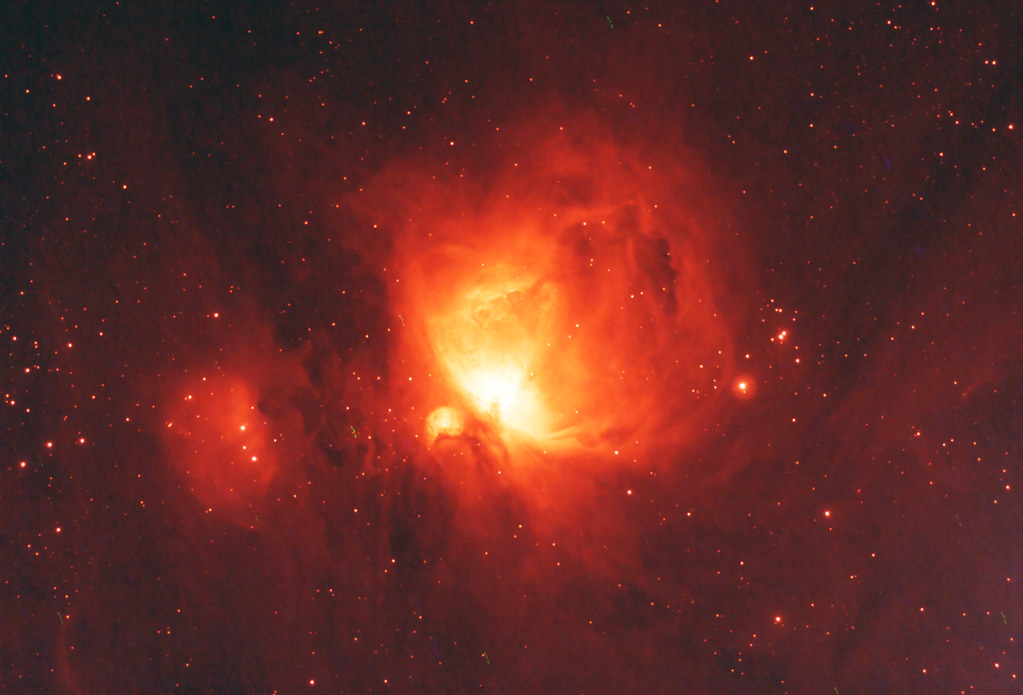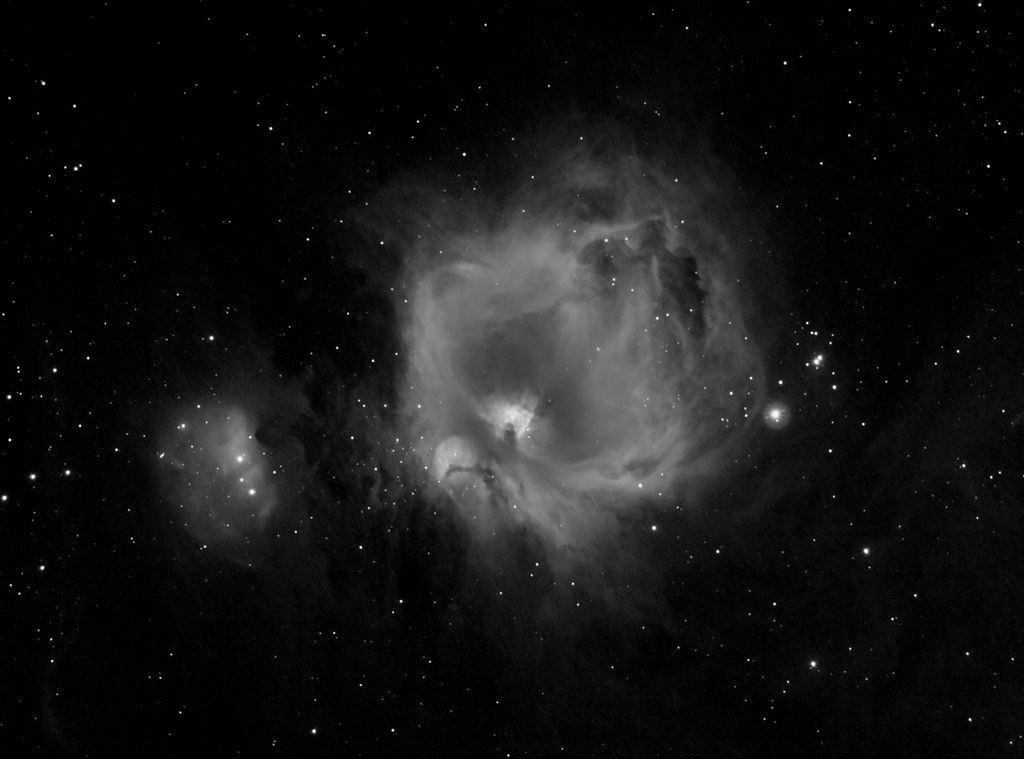 What do you do when you have a modded DSLR camera, light-polluted skies, and a pretty bright moon? Stay inside taking infrared pictures of your pets? OK, sometimes I do that, but now I'm talking about narrowband imaging. This is a technique of using a filter with a very narrow bandpass. The idea here is to only image a certain wavelength of light, while rejecting all others (including all that pesky light pollution). On Friday night I was using a Baader 7nm H-alpha filter. The significance of the 7nm number is the width of the band of light that is allowed the pass. The smaller the number, the narrower the bandpass, and the more selective the filter. Smaller bandpass usually equals higher price, but the Baader is reasonably priced. You can see a plot of the light transmission here.
What do you do when you have a modded DSLR camera, light-polluted skies, and a pretty bright moon? Stay inside taking infrared pictures of your pets? OK, sometimes I do that, but now I'm talking about narrowband imaging. This is a technique of using a filter with a very narrow bandpass. The idea here is to only image a certain wavelength of light, while rejecting all others (including all that pesky light pollution). On Friday night I was using a Baader 7nm H-alpha filter. The significance of the 7nm number is the width of the band of light that is allowed the pass. The smaller the number, the narrower the bandpass, and the more selective the filter. Smaller bandpass usually equals higher price, but the Baader is reasonably priced. You can see a plot of the light transmission here.Some objects are rich in H-alpha light, others are not. Thus narrowband imaging is not suited for everything. But when it comes to really faint nebula, this works wonders in bringing out subtle details. I decided on imaging M42 because the entire Orion region is full of H-alpha emissions, and because Orion is well-placed in the sky after sunset this time of year. While logging my mount's tracking as described in the previous post, I took 30 exposures of 3-minutes each at ISO 1600. The result is pretty interesting, but I have much to learn about processing narrowband images. It's tricky because of everything being in the red channel. I still have more work to do on the above image, including layering in some shorter exposures to show some core detail of M42. But it's a good start and I am happy with it. I also have a Baader O-III filter that I will try sometime. One of these days I'll get a sulfur filter and have a full narrowband set for tri-color imaging. Should be fun!
UPDATE: Today I processed some 15-second exposures and did a layer mask in Photoshop to bring out more core detail. Below is the result with one using only the luminance channel and one using RGB.


No comments:
Post a Comment